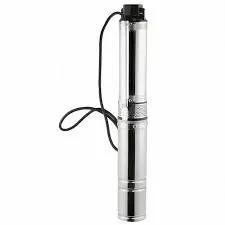Nov . 17, 2024 09:57 Back to list
submersible pump cable
Understanding Submersible Pump Cables An Essential Component for Water Management
Submersible pump cables are an integral part of water management systems in various applications, such as agriculture, municipal water supply, and industrial processes. These specialized cables are designed to connect submersible pumps to their power sources, allowing them to effectively pump water from underground sources, such as wells, boreholes, and reservoirs. Understanding the characteristics, types, and applications of submersible pump cables is crucial for ensuring efficient and reliable operation of submersible pump systems.
Characteristics of Submersible Pump Cables
Submersible pump cables are distinct from standard electrical cables due to their unique construction and materials. One of the primary requirements for these cables is their ability to withstand harsh conditions found underwater. This includes exposure to moisture, temperature variations, and corrosive elements present in water. As a result, submersible pump cables are typically made from high-quality thermoplastic materials, such as polyvinyl chloride (PVC) or thermoplastic elastomer (TPE), which provide excellent insulation and protection.
Moreover, these cables are often designed to be flexible, allowing for easier installation and avoiding damage during operation. The cable's durability is vital, as it should maintain its integrity over time while submerged in water. Additionally, submersible pump cables must be resistant to chemicals and other environmental factors to ensure long-term reliability.
Types of Submersible Pump Cables
There are several types of submersible pump cables available in the market, catering to different pumping applications and environments. The most common types include
1. Single Conductor Cables These cables consist of a single conductor, typically made of copper or aluminum, which is insulated with a protective layer. They are suitable for low-power submersible pumps and are often used in smaller applications.
2. Multi-Conductor Cables These cables contain multiple conductors, enabling them to transmit more power. They are commonly used in larger submersible pumps and industrial applications where higher horsepower is required. The conductors are usually bundled together and insulated, offering comprehensive protection against water intrusion.
3. Flat Cables Flat cables are designed for applications where space is limited. These cables have a flat profile, making them easy to install in tight spaces. They are often used in residential and agricultural applications where submersible pumps are deployed in shallow wells or small reservoirs.
submersible pump cable

4. Reinforced Cables For environments that require extra protection, reinforced submersible pump cables are available. These cables feature additional protective layers or armor to resist abrasion and potential damage from external factors, such as rocks or sediment.
Applications of Submersible Pump Cables
Submersible pump cables are used in a wide range of applications, each with unique requirements. Some key applications include
- Agricultural Irrigation Farmers rely on submersible pump systems to efficiently irrigate their crops. Durable cables ensure a consistent power supply for pumps operating in remote areas or wells.
- Municipal Water Supply Local governments utilize submersible pumps to draw water from wells and aquifers to provide drinking water to communities. Reliable cables are essential for the safe operation of these vital systems.
- Industrial Processes Submersible pumps are used in various industrial applications, including dewatering, wastewater management, and coolant circulation. Quality cables guarantee effective operation, minimizing downtime and maintenance costs.
- Fountain and Decorative Water Features Submersible pumps are also employed in decorative applications, such as fountains and ponds. Ensuring that these pumps are powered effectively contributes to the aesthetic and functional aspects of landscaping.
Conclusion
In summary, submersible pump cables play a crucial role in ensuring the efficient and reliable operation of submersible pumps across multiple applications. Their specialized design, characterized by durability, flexibility, and resistance to harsh conditions, makes them indispensable in water management systems. Understanding the various types and applications of these cables can help users select the appropriate solutions for their specific needs, ultimately leading to enhanced performance and longevity of submersible pump systems. Investing in high-quality submersible pump cables is essential for any project that relies on these vital pumping systems.
-
Submersible Water Pump: The Efficient 'Power Pioneer' of the Underwater World
NewsJul.01,2025
-
Submersible Pond Pump: The Hidden Guardian of Water Landscape Ecology
NewsJul.01,2025
-
Stainless Well Pump: A Reliable and Durable Pumping Main Force
NewsJul.01,2025
-
Stainless Steel Submersible Pump: An Efficient and Versatile Tool for Underwater Operations
NewsJul.01,2025
-
Deep Well Submersible Pump: An Efficient 'Sucker' of Groundwater Sources
NewsJul.01,2025
-
Deep Water Well Pump: An Efficient 'Sucker' of Groundwater Sources
NewsJul.01,2025
-
 Submersible Water Pump: The Efficient 'Power Pioneer' of the Underwater WorldIn the field of hydraulic equipment, the Submersible Water Pump has become the core equipment for underwater operations and water resource transportation due to its unique design and excellent performance.Detail
Submersible Water Pump: The Efficient 'Power Pioneer' of the Underwater WorldIn the field of hydraulic equipment, the Submersible Water Pump has become the core equipment for underwater operations and water resource transportation due to its unique design and excellent performance.Detail -
 Submersible Pond Pump: The Hidden Guardian of Water Landscape EcologyIn courtyard landscapes, ecological ponds, and even small-scale water conservancy projects, there is a silent yet indispensable equipment - the Submersible Pond Pump.Detail
Submersible Pond Pump: The Hidden Guardian of Water Landscape EcologyIn courtyard landscapes, ecological ponds, and even small-scale water conservancy projects, there is a silent yet indispensable equipment - the Submersible Pond Pump.Detail -
 Stainless Well Pump: A Reliable and Durable Pumping Main ForceIn the field of water resource transportation, Stainless Well Pump has become the core equipment for various pumping scenarios with its excellent performance and reliable quality.Detail
Stainless Well Pump: A Reliable and Durable Pumping Main ForceIn the field of water resource transportation, Stainless Well Pump has become the core equipment for various pumping scenarios with its excellent performance and reliable quality.Detail
